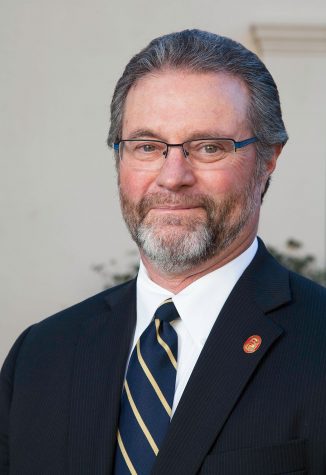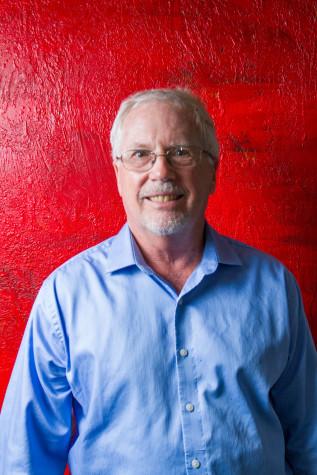Understaffed City College departments might not be able to meet student expectations next semester because of campus-wide reorganization and early retirements.
Along with other adjustments, the Supplemental Early Retirement Program has helped lower the $9 million deficit projected in early October. As of Feb. 6, the deficit has been decreased to $4.5 million. However, many of the positions lost will not be replaced, increasing the workload of each department significantly.

Superintendent-President Dr. Anthony Beebe.
Superintendent-President Dr. Anthony Beebe said the unprecedented deficit for a college of this size has forced City College to respond in an unusual way.
The Budget Resource Allocation Committee said the retirement program will bring City College $1,368,234 in savings in the 2017-18 academic year. The reorganization of the Office of Educational Programs alone accounts for $991,104 of those savings.
Student President Dylan Raiman believes the college has been very creative and innovative in the cost-saving strategies it’s implementing.

Dylan Raiman, student senate president
“Encouraging retirements and reorganizing, in my opinion, is a much better option than layoffs and program cuts,” Raiman said.
The deficit is a result of many issues including the enrollment drop. City College has lost over 1,600 students since Fall Semester, which has been described as a blessing in disguise by the understaffed departments.
City College gets most of its funding based on the amount of students enrolled. It has 13,966 students enrolled, which is 6,266 less than Fall Semester of 2009.
The Office of Communications and its director Luz Reyes-Martin are working towards stabilizing the drop, which means bringing in a sustainable amount of students.
“Let’s take a look at how we can improve programs, improve our operations, and really look at the community and making sure they know what we’re doing,” Reyes-Martin said.
A monthly newsletter launched in November called “The Bridge” shares campus news stories to bring in more community interest and involvement to the college.
“We’ve heard in the past that people in the community don’t really know what’s going on here, and it’s important for them to know because they’re part of this community,” Reyes-Martin said.
Even though the college departments are losing many positions this year, they are still managing to work on projects that will improve students’ lives.
The Information Technology Division, for example, will lose more positions to early retirement next year, giving its staff a lot more work to do. However, they have already implemented a system to organize all of the projects they have in order from most important to least important.

Paul Bishop, Information Technology vice president
“We have an IT project form, so anyone that has a prospective project needs to fill out the form,” said Dr. Paul Bishop, vice president of Information Technology. “It goes through review by our administrative assistants, and then they rank them. Sometimes by the time we get to them, people might say ‘oh we don’t want to do that anymore.’”
The system was developed to make sure all major issues concerning students and staff get priority and are resolved as swiftly as possible.
Projects that are not seen as a priority are put on a list and will only be looked at if there is nothing more important on the list.
“The list gets longer, and it’s those things that would be nice, but don’t directly impact students,” Bishop said.
Faculty and staff have been working on efficient systems and methods to deal with the increased workloads all semester. Depending on the amount of students enrolled next semester, students might not even notice these departments are understaffed.
Correction: April 14, 2017
A previous version of this article stated that the Office of Communications and its director are working on bringing in a substantial amount of students. They are not working to bring in a substantial amount of students, they are working on bringing in a sustainable amount of students








